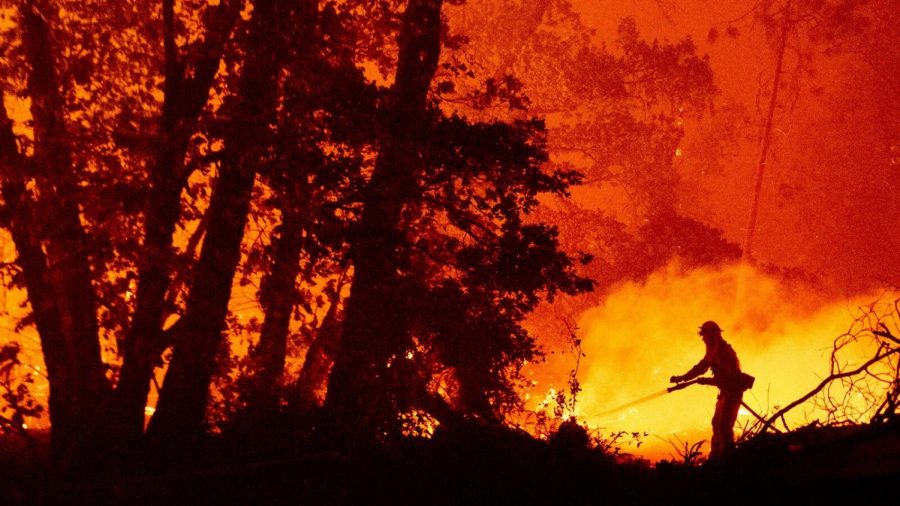Tragedy Arises In California
October 30, 2020
4.1 million acres. That figure is the amount of land the record-breaking California wildfires that have scorched this year so far. According to the California Department of Forestry and Fire Protection, over 9,000 buildings have been destroyed, along with the unfortunate growing tally of deaths, which as of October 19, sits at 31. Wildfires have become a seasonal normality on the west coast. However, with this year’s inferno becoming the first to be labeled as a “gigafire,” a classification designated to fires that burn a minimum of a million acres, in Californian modern history, people are questioning why each season is becoming increasingly worse.
The unavoidable fact of the matter is that climate change has played a huge role in the start, spread, and continuous glow of the blaze. According to a research team of scientists, climate change plays an “unequivocal and pervasive” role in the increase in frequency, as well as the severity of the wildfires. The leader of the study, Dr. Matthew Jones, said, “…that the trend is driven by climate change.” The team who conducted the review analyzed more than 100 studies and were also at the helm of discovering the origin of the Australian wildfires earlier in 2020. To add even more evidence to support this claim, California documented what is thought to be the hottest temperature ever reliably recorded in history. At 129.9 degrees Fahrenheit, Death Valley, California is now thought to be the site of the hottest temperature ever. To those familiar with the urgency that climate change provides, the actively uncontrolled fires serve as a sign of what’s to come for locations across the globe. As stated by the Environmental Defense Fund, the Earth’s temperature is on its way to 2.7 degrees Fahrenheit warmer since the 19th century. As a consequence, wildfire seasons last months longer, along with the other harmful effects such as rising sea levels, and a rapidly depleting ozone layer. These adverse conditions are predicted to usher in an era consisting of widespread water shortages, extremely unpredictable and powerful weather systems, along with global temperature spikes.
Despite the solid argument that climate change is a major contributor to the California wildfires, many disagree. One of these opposition leaders happens to be our very own President, Donald Trump. On multiple occasions, the president, as well as those who serve in his cabinet, have blamed poor forest management for the widespread outbreak of flames. On top of this, Trump has repeatedly blamed California for the wildfires and had previously threatened to withhold federal funds. Despite these comments, countless scientists have come out in resistance to the President’s claims. It’s also important to note that 1.1 million acres that have been engulfed are federal lands, managed by the federal government, not California. On Thursday, October 15, President Trump announced that he would deny federal aid to the Democratic governed state, subsequently leading to an instantaneous tweet from Governor Gavin Newsom reading, “we are appealing this.” This then led to a conversation between the pair, ultimately falling in Newsom’s favor, as the President announced that he would be reversing his decision, and supplying federal aid. Newsom, an avid believer in climate change, previously stated that “If that’s not proof point, testament, to climate change, then I don’t know what is,” when referring to the scale of this year’s fires.
While the ongoing blaze is at the forefront of our nation both environmentally and politically, the United States isn’t the only country being affected. According to multiple news outlets, smoke from the wildfires made its way across the Atlantic to the continent of Europe. According to senior scientist, Mark Parrington, smoke at high altitude transferred from North America to Europe happens around 1 to 2 times a year from British Columbia, not the US. Such events are seen as rarities but are likely to become common occurrences as the years wear on.
September and October are traditionally seen as months that yield the most catastrophic fires in California. Firefighters continue to remain cautiously optimistic despite the historic tendencies, as many of the fires are finally beginning to become contained. While this is hopefully a sign of good things to come, officials have urged people to remain on guard due to the continual heat.
